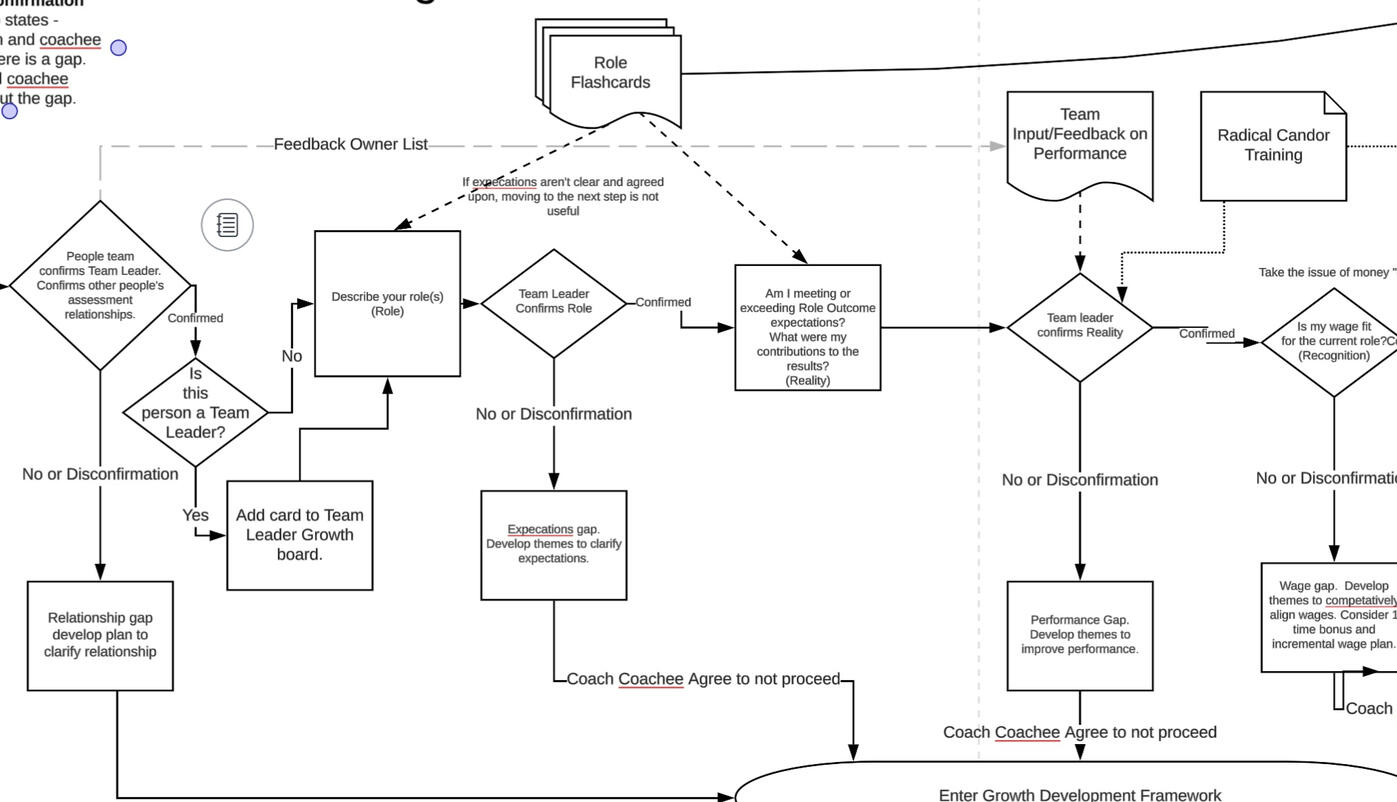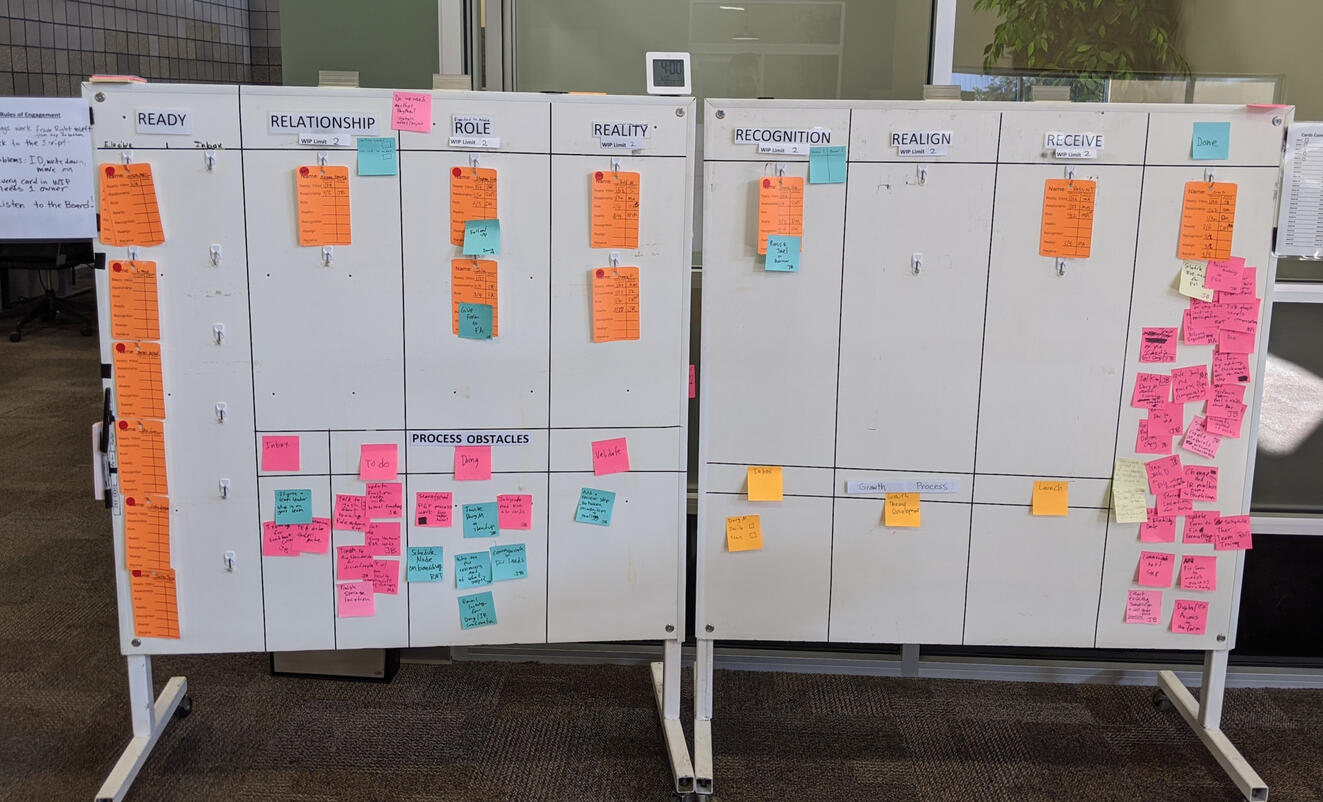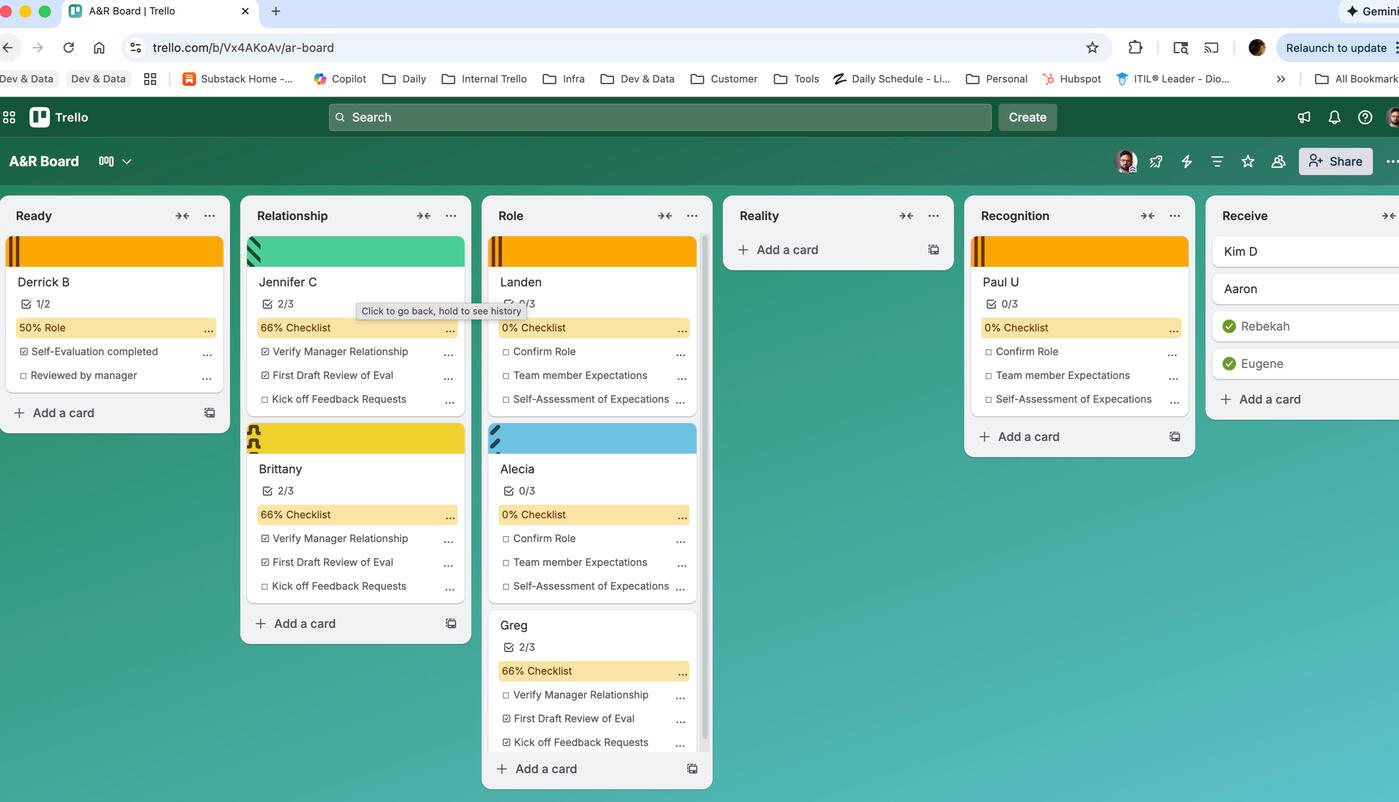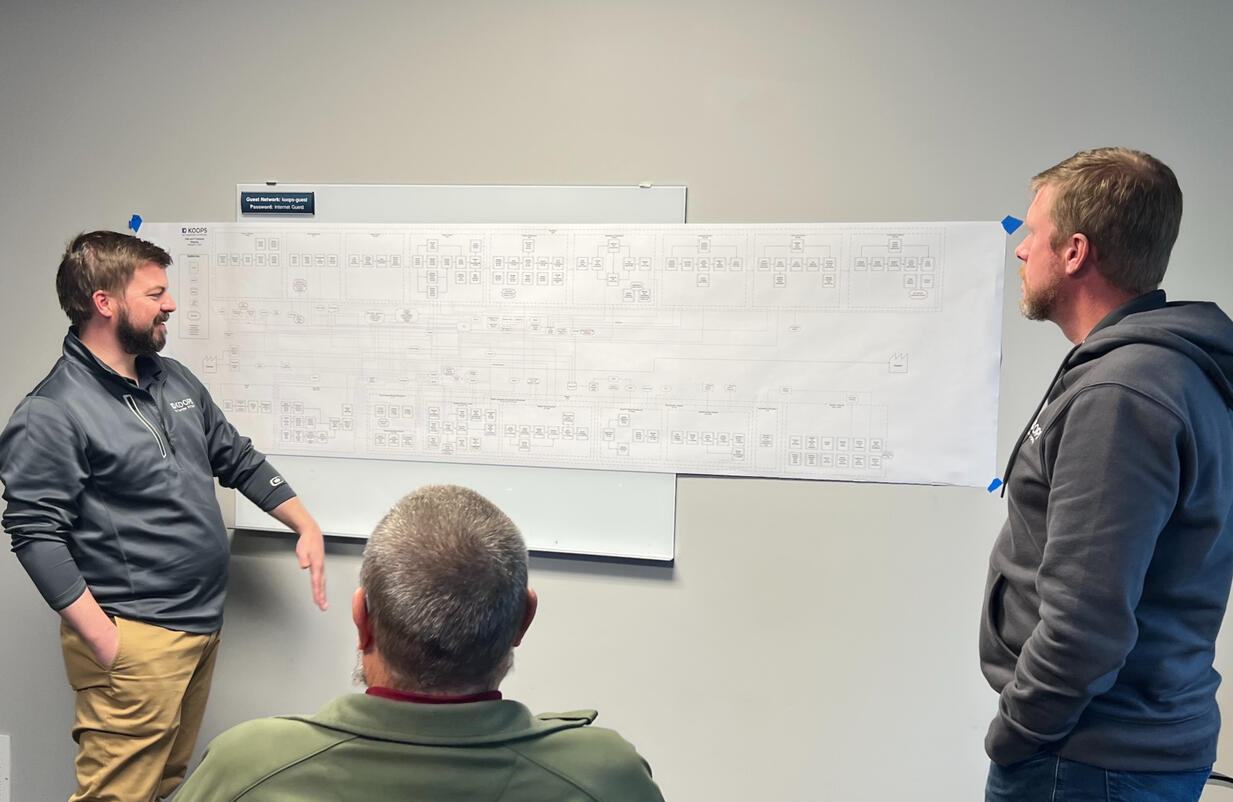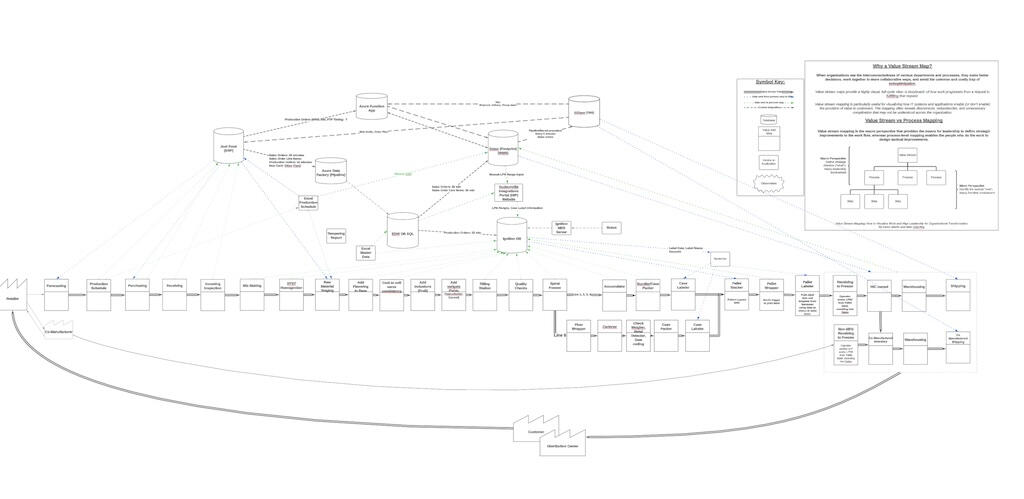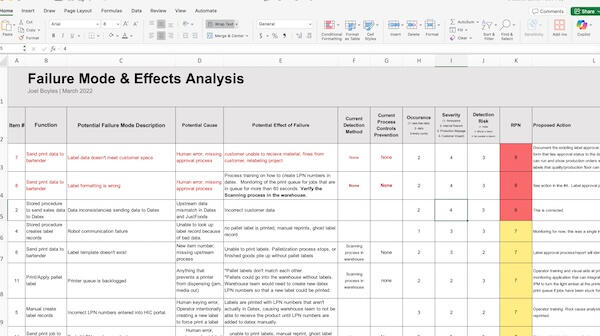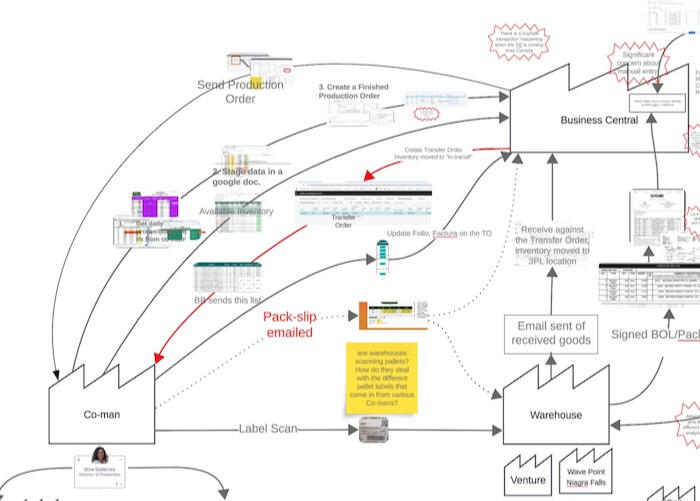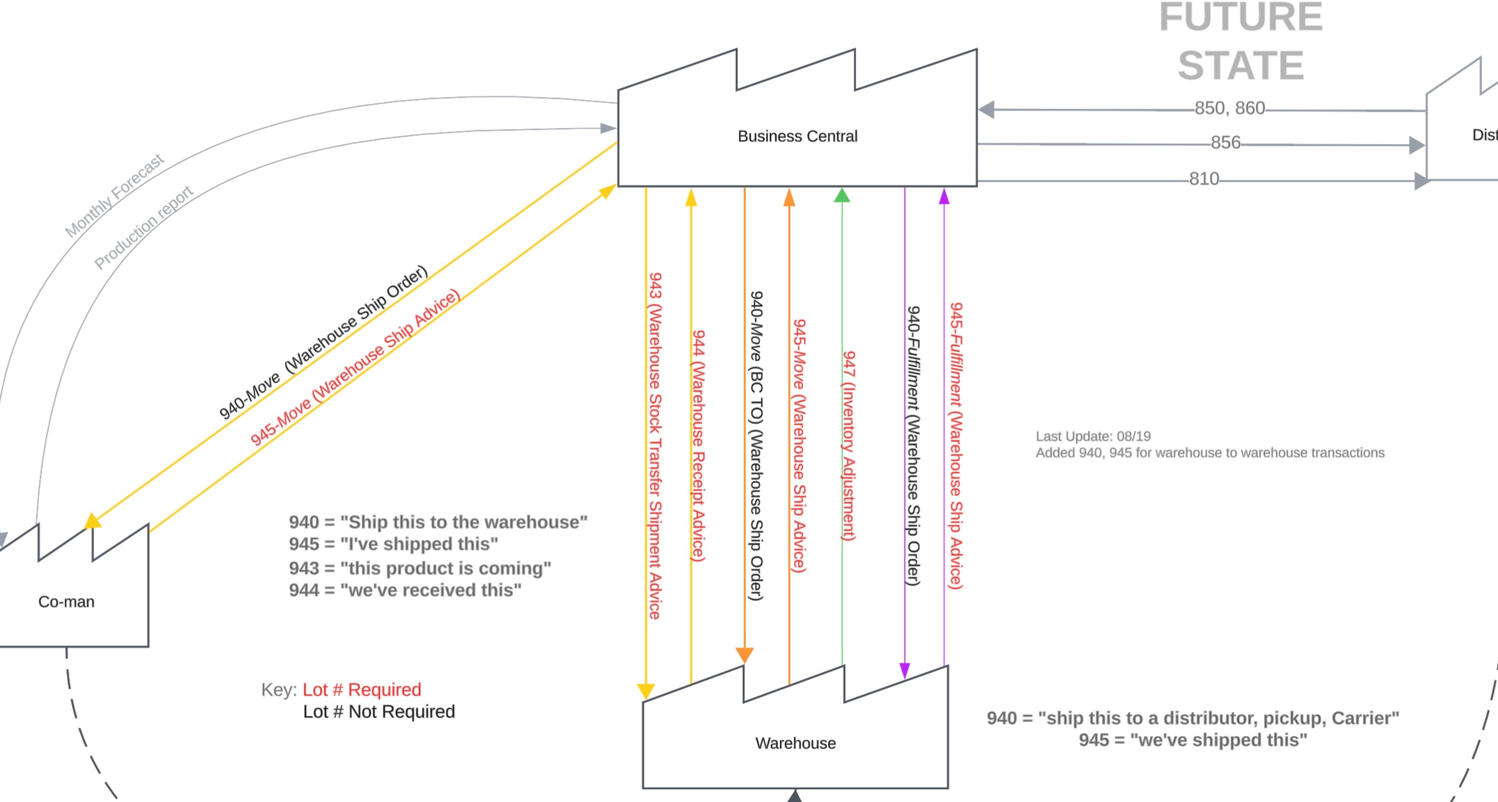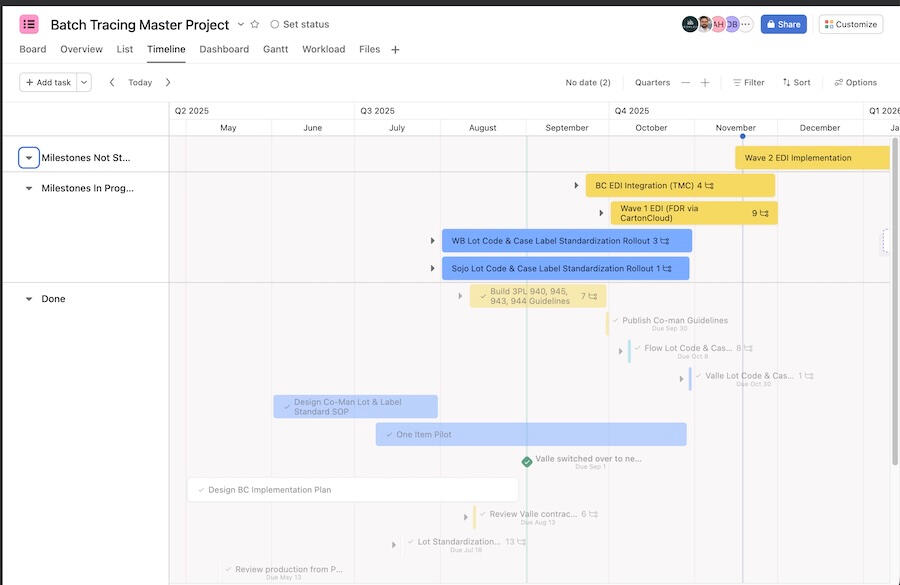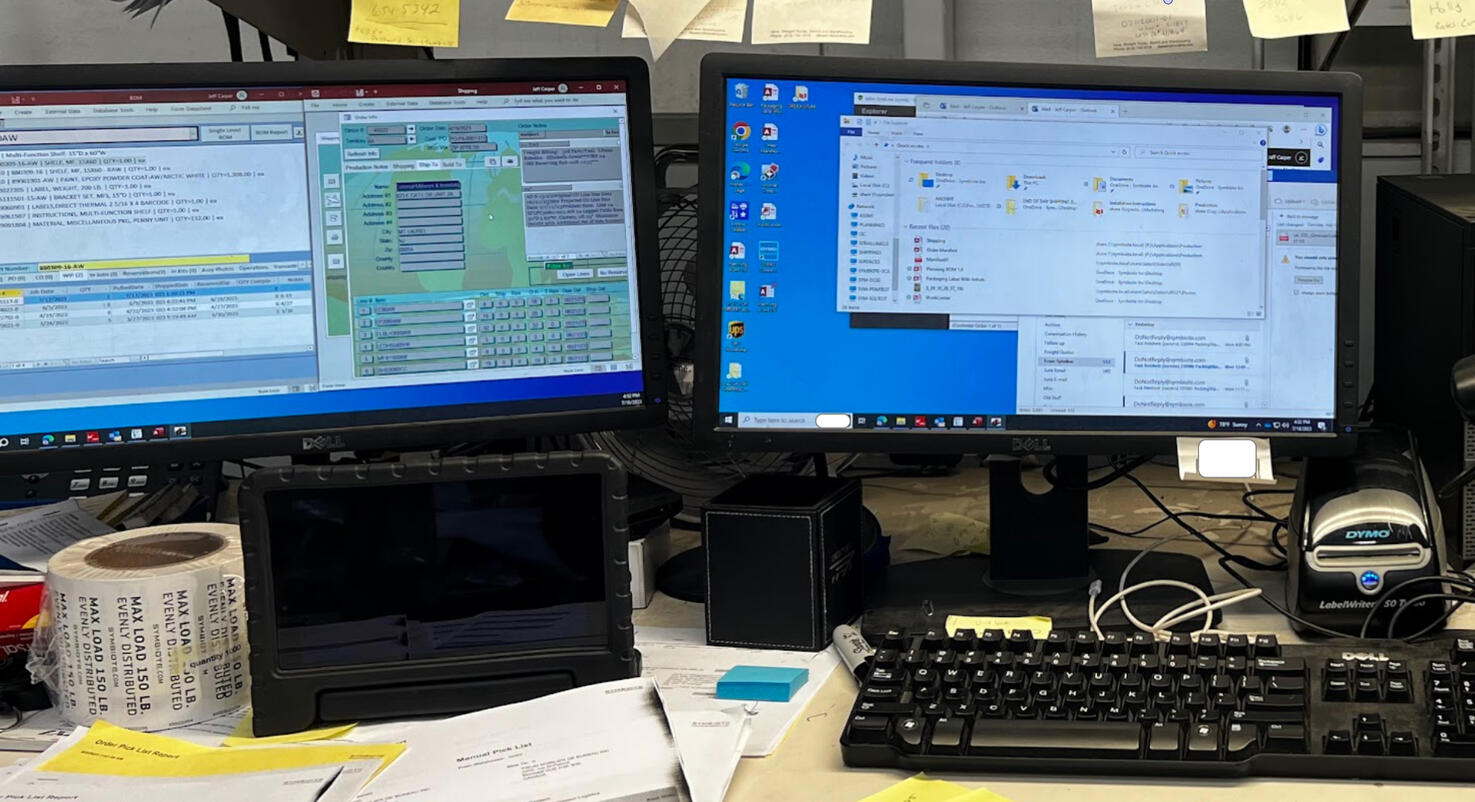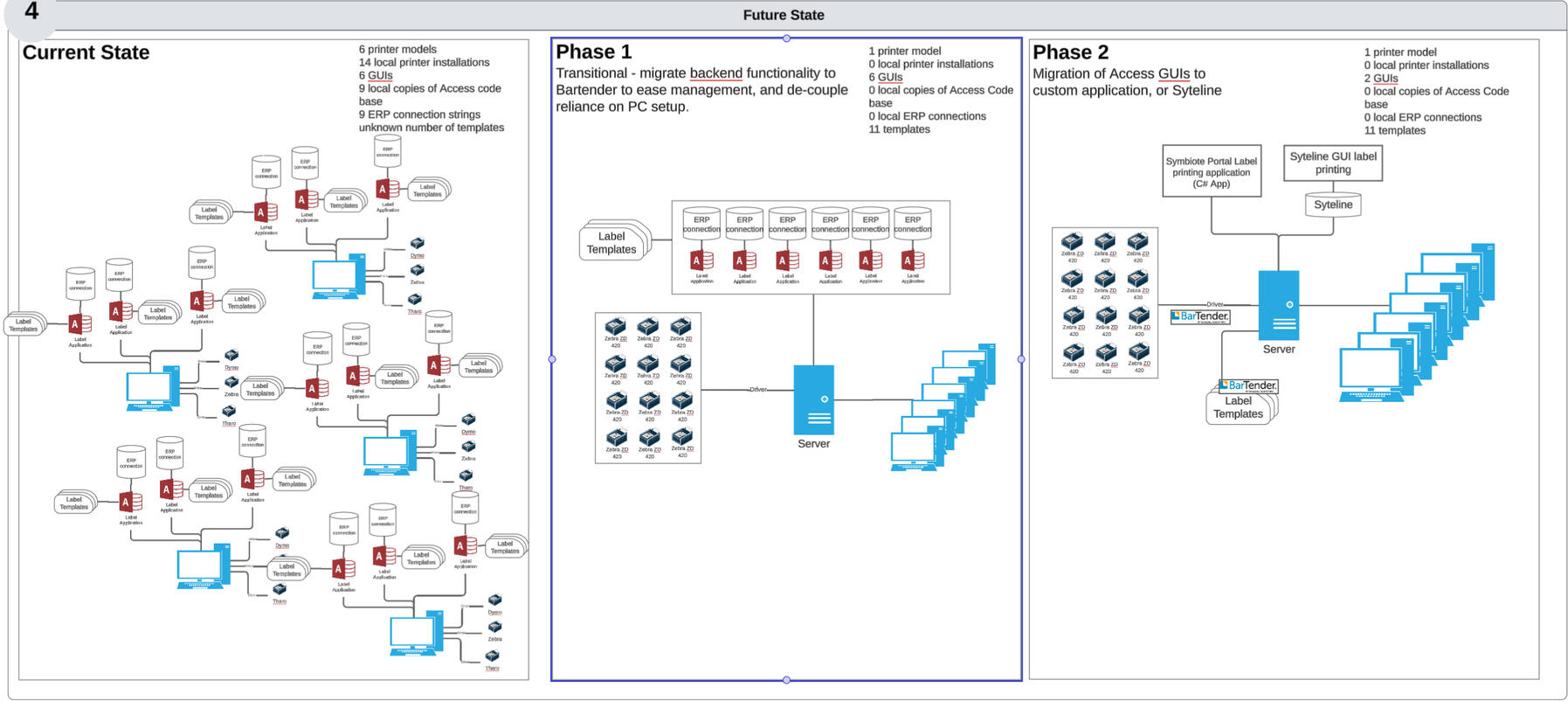My Work
Here are a few examples of work I've done.


Contributed original song, "Small Town"

Early Aughts: Mouths
Contributed original music, engineering and mastering.
the Press Delete: Small Town
Original music & artwork. Engineering, mixing and mastering.
Early Aughts: Digital Natives
Contributed original music. Production, mixing and mastering.
Terminal Buds: Vol 1
Contributed orginal music. Mastering.
Rob Kenagy: Flop
Mastering.
Using KanBan to Improve Performance Evaluations
From gridlock to "go", how applying lean manufacturing techniques to an HR process helps performance evaluations start moving again.

The Problem
An organizations annual performance evaluation process is a constant source of pain and frustration for managers and team members.
+An evaluation may take months to complete, being out of date before it's delivered.
+Manager-to-manager process variations allow unwanted people bias
+Manager workload becomes unbearable as they try to manage normal day to day operations
+Hand-offs between cross-functional teams (Ops, HR, Finance) caused collisions, lost/missing paperwork
Mapping The Process
Over the years, many "improvements" had been done to the evaluation process, but as Eliyahu M. Goldratt teaches us in "The Goal", any improvement not done to the bottleneck, isn't an improvement and in order to make lasting change, we needed to visualize the intended process, and discover the bottleneck.Over several days of drawing, the team began to see the misalignments in how the process was intended vs how it was currently operating.Creating a clear future state process map now established the standard for what we were hoping to achieve.
Exposing a problem on the first cycle
Using the lean manufacturing techniques of demand leveling and visual management, a KanBan board with lane WIP limits was built, and a standardized work approach developed. It wasn't long before we identified our first problem.As we anxiously huddled around the board on kick-off day, our first card got blocked in the first lane: the team member wasn't clear on their manager alignment and couldn't appropriately fill out the self-evaluation form. We had discovered our first real problem.
Locking in improvements
Cycle after cycle, we found bottlenecks, blockers and improvement ideas. Cycle after cycle, we updated our KanBan board, adjusted our standardized work, and applied our new process to the very next evaluation.No need to wait until next year to try and improve, or re-train our managers - we were able to immediately benefit from our lessons learned the very next day.
Going Digital
After many improvement cycles, we were ready to build a system that our hybrid and geographically distributed work-force could use.
Utilizing Cognito Form, MS PowerApps, Trello and O365, we were able to maintain a visual tool that harnessed the power of digital forms, checklists and automations. This flexible tool stack allowed us to continue to improve the process, cycle after cycle.

Mapping the process helped align leadership on the expecations.

Whiteboarding the KanBan board allowed us to stay flexible as we learned.

After several iterations a more permanent board was developed, which included a process improvement backlog. Notice the pink post-It notes on the right. Each note represents a process improvement implemented.

Moving the board digital was necessary to support an increasingly hybrid workforce. Keeping it flexible and easy to update was a key requirement, which is something Trello is very good at.
Lean Principles at Play
Visual Management
Heijunka - Demand Smoothing
Never Pass Bad Quality Down Stream
Standardized Work
Root Cause Analysis, Permanent Fixes
Smaller batch (quarterly vs annual)
TL;DR
Applying Lean Manufacturing techniques to a painful HR process exposes hidden problems and enables permanent corrective actions, reducing manager workload and improving team member satisfaction.
Value-Stream, Process Mapping and A3 Workshops
Visually mapping each step helps align cross-functional leaders around what's most important - customer value.

The Problem
Your team is comprised of smart individuals focused on problem solving and executing in their own sliver of the business. Frequently those individuals suffer from "silo" thinking, causing leaders to make decisions that may negatively impact other areas of the business.As these leaders passionately pull energy and resources to solve their area's issues, they may be reducing performance in other areas, reducing the overall flow of value to the customer.
Getting Everyone on the Same Page
Value-stream mapping exercises offer a safe zone to learn, debate and align on how the business operates as a whole. When everyone is staring at the same page on the wall, functional competitors turn into value-creating allies.No matter how many times I lead a workshop, I always hear the same comment: "Wow, I had no idea it was this complex". That's the moment I know we're breaking through.
Deep diving the process
Sometimes a value-stream workshop works as a team member alignment tool other times it's just the start to a longer journey. As teams identify bottlenecks, a more detailed process mapping may follow. This exercise allows the team to deep dive into the issues, and creates a working visual for fast alignment, learning and improving.
Using A3 Thinking to focus in on a singular issue
A problem is identified, and the team is ready to move. Now what?A3 thinking came from Toyota as a way to teach their team how to be scientific thinkers. By using A3 thinking, the team can clarify problem scope, align on outcome objectives, and run fast-fail experiments, not only crafting a better future-state, but developing a team of world-class problem solvers at the same time.

Visualizing how technology supports your value-stream is a fantastic way to help make broad software decisions.

Using post-it notes on a wall can be a low tech way to visualize your value-stream.

Inviting interaction with the VSM is a great way to engage the team.
TL;DR
Value-stream mapping, process mapping and A3 thinking work together to clarify pain points, align teams around strategic objectives, and develop the skill of disciplined problem solving in your organization, leading to lasting improvements.
Addressing a Palletizing Pain Point with Value Stream, Process Mapping and A3 Problem Solving.
A production bottleneck requires a food manufacturer to coordinate problem solving efforts cross-functionally.

The Problem
Palletizing product was a major pain point in the flow of production, and the team needed a resolution fast. Labels were missing or incorrect. Shrink wrap was misapplied, product was damaged. Was it an IT problem? A equipment problem? A production problem? Finger pointing and passing the problem weren't getting us anywhere.
VSM: Getting Everyone on the Same Page
A geographically split team resulted in silo'd thinking, and bringing the team together for a value-stream mapping session began to break down those silos. Drawing up the entire VSM brought much needed context and alignment to the team, and changed the dynamic from "us vs them", to "all-of-us vs the problem".For many, this was the first time they observed the business outside of their area.
Process Mapping & Pain Point Assessment
Process mapping helped us dive deeper and truly understand the current state. A Pain Point Assessment began to get people engaged as it drew out discussion in a safe and focused way, allowing us to address disagreements and allow healthy debate - necessary for creating alignment.
FMEA helps us find the top 3
After much work, we had developed 18 clear and agreed upon problem statements.So where do we start?Doing a Failure Mode & Effects Analysis helps us prioritize problems by risk and impact. Three problems rise to the top of the list, ready to be tackled with A3 thinking.
Using A3 Thinking to focus in on a singular issue
After all that work, we finally arrive at the starting line. An A3 helps guide the problem owner through a disciplined problem solving approach, by clarifying the goals/targets, mapping out the future state and ensuring a high quality, long lasting outcome.

We started by mapping out the Value Stream - this was the first time that several team members were exposed to how the business worked outside of their area.

Doing a deep dive on a specific process allowed us to collaborate and expose known pain points.

Using FMEA helped us prioritize issues by business impact and risk. This fact based approach helped us ensure we weren't just focusing on the loudest voice in the room.

Each problem has it's own A3, ensuring the problem owner addresses the issue in a disciplined, scientific approach.
My Role
Value Stream Facilitator
Business Analyst
A3 Facilitator
TL;DR
Utilizing VSM, Process Map, FMEA and A3 helped an organization understand and overcome a painful and costly production process.
Implementing Lot Control Across a Distributed Manufacturing Environment
A national beverage company needed faster access to product lot information.
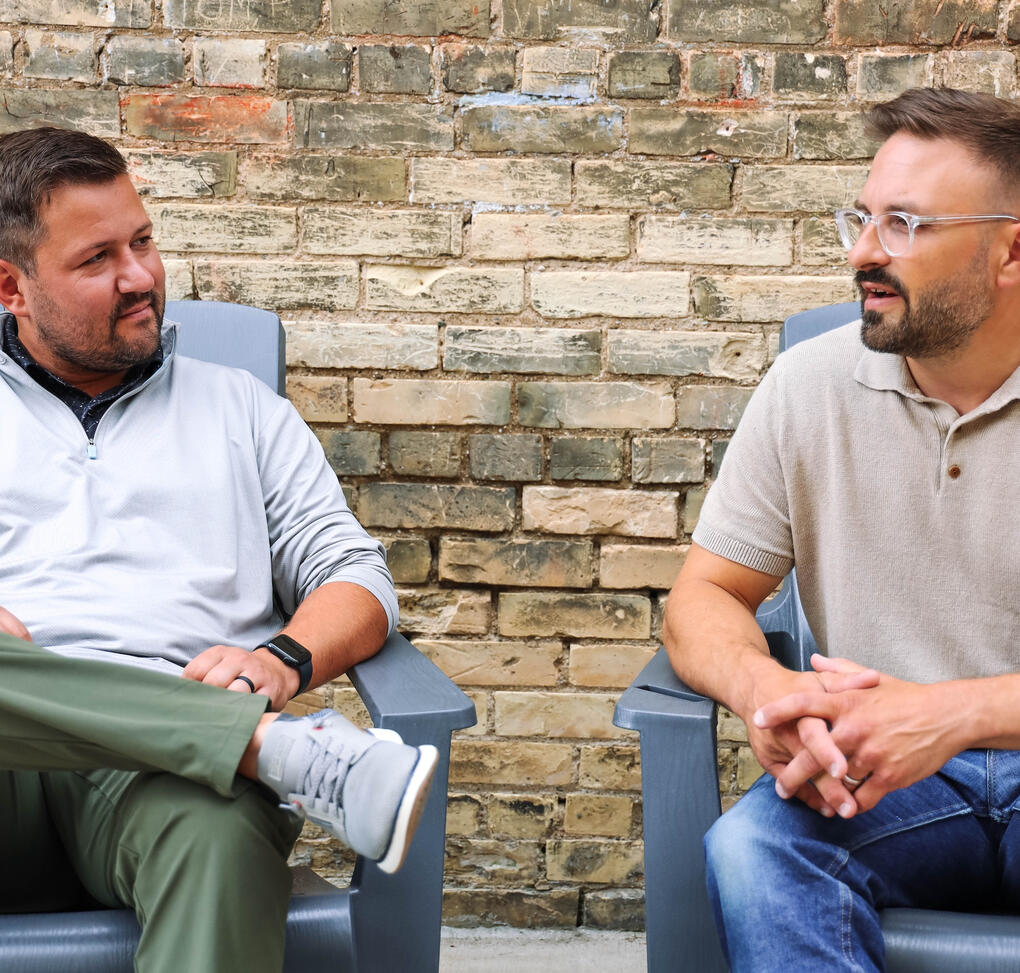
The Problem
Rapid growth as a beverage producer, with a distributed co-manufacturing model, led to lot number fragmentation, duplication and lack of information flow. The process of tracking down product by lot took weeks, and couldn't be done with 100% reliability leaving the organization at risk.
Understanding the Process
Due to the organizations highly distributed, outsourced and remote nature, it was not understood how the process currently worked or how to change it to support lot number tracking.After interviews with operations, logistics, fulfillment and finance leaders a true problem statement and scope emerged - we finally knew where we wanted to go, but where were we now?Using A3 and process mapping techniques, a map of 10 key data flows, and 12 key process steps across 6 co-manufacturers and 5 3PL warehouses emerged providing a clear view of the mess.
EDI Implementation Replaces Manual Processes
To achieve the desired future state we needed to complete inventory transactions faster than the current email and spreadsheet system would allow. Implementing strategic EDI documents would not only give us lot # accuracy, but improve the overall accuracy and data timeliness, allowing for financials to be reported sooner.
Project Management Challenges
Managing a project with 3 work-streams, 2 technology vendors and 9 partners is challenging. Using easy to understand visuals, and great communication skills allowed the team to manage the work with minimal frustration. Utilizing Asan's Gantt, KanBan and list views allowed simple, flexible management of the workflow.

Drawing up the current state process map was an essential step, not only for my understanding, but for bringing the entire cross-functional team along.

Creating a future state diagram allowed us to quickly get the EDI partners and integrators all working towards the same goal.

Using Asana allowed easy, visual management of not only the main project, but each of the sub-projects.
My Roles In this Project
Project Manager
A3 Facilitator
Business Analyst
EDI Specialist
Developing an IT Strategy for a fast growing manufacturer
A young, enthusiastic IT team needs coaching and direction.

The Problem
Rapid growth as a beverage producer, led to an IT team that was left constantly putting out fires.
Visualizing The Work
Deploying methods of managing work was an essential early step. Visualizing the work and creating Scrum rhythms helped the team reduce their overall meetings, and created time-bound objectives that were easier to manage. By using Kanban techniques, we were able to reduce the team's WIP, ensuring that we focused on finishing work before starting new.
Service Delivery, Security and Projects
For this team it was best to break down the work into three categories: Risk Management, IT Service Delivery and IT Projects. Breaking the work down allowed us to establish targets and objectives that aligned with the business.Furthermore, breaking down the work in these manageable ways allowed the leadership to better understand how IT was enabling the business objectives.
Vendor Management
Small IT teams often depend on the performance of their vendors, and this was no exception. Working with vendors to clarify services, Service Level Objectives (SLO), and Performance Metrics was an important way to help vendors perform at their best, and connect their work to the overall business goals.

Mapping the process helped align leadership on the expecations.

Whiteboarding the KanBan board allowed us to stay flexible as we learned.
My Role
Strategic Facilitator
IT Coach / Consultant
Updating a Shop Floor's Antiquated Access Apps
A furniture manufacturer relied on MS Access for key Shop Floor operations. It worked great until it didn't.
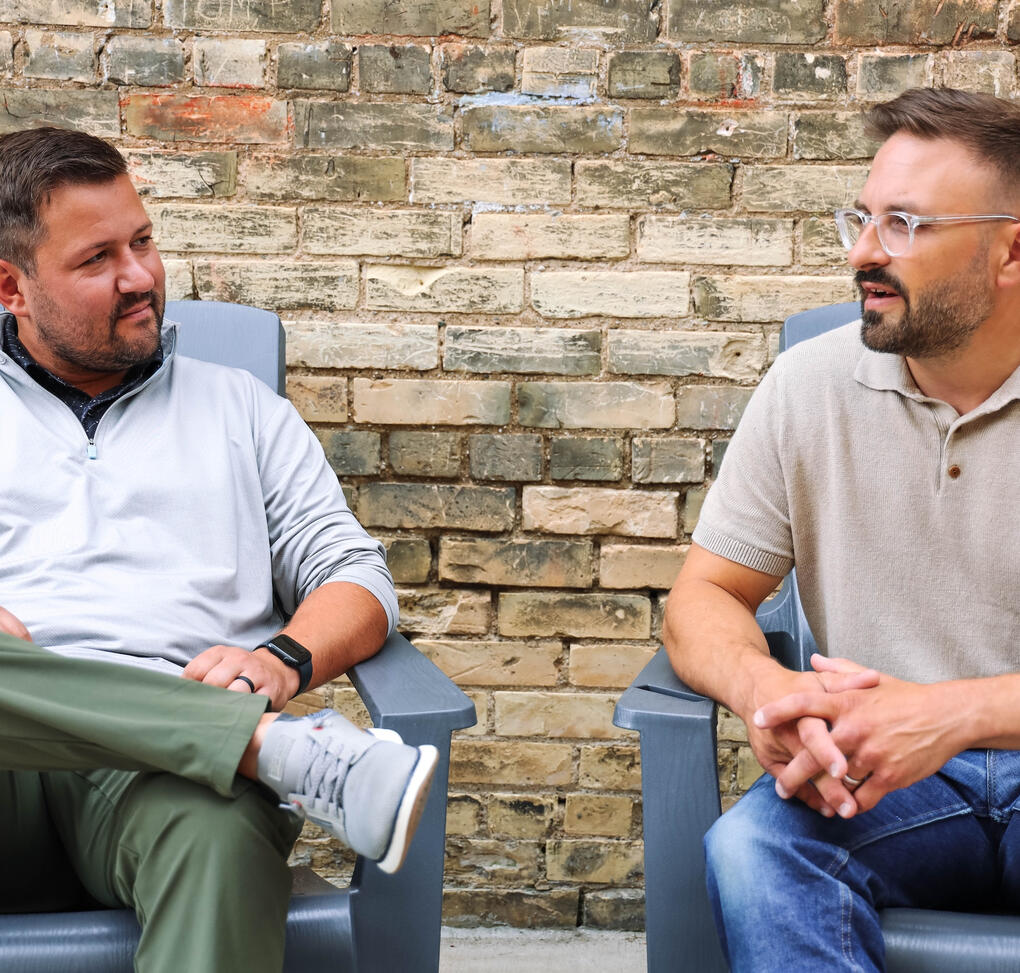
The Problem
Over a period of 20 years, a DIY IT team built dozens of Access applications to support several aspects of the business, including Product Engineering, Production Scheduling and Assembly. As that IT team left for other opportunities, the operations team was left with a support nightmare, unable to even upgrade a computer without fear of loosing access to critical functions.
Developing a plan
With over 30 Access applications to upgrade, we worked through a process of prioritization, either eliminating unneeded applications, migrating the functionality into their ERP (Infor Syteline), or rebuilding custom applications in a modern platform (Azure/Blazor and BarTender for label printing).
Going to the Gemba
The Lean principle of "Going to the Gemba" was crucial - walking the shop floor, asking why applications were used and showing respect for the existing way allowed us to develop applications that were easier to use, and required less tribal knowledge to manage.
Unlocking Improvement Ideas
As we gained the trust of the production team many improvement ideas were shared and implemented, making the process better than we found it.

Dozens of Access applications ran key engineering, production and shipping functions. These apps created a significant risk and needed to be replaced.

Using an A3 approach allowed us to navigate a complex migration in a way that the production team found easy to understand.

Taking a phased MVP approach helped us build trust with the team, deploy with minimal disruption and learn as we went along.
My Role
Account Manager
Architect
A3 Owner
Agile/Lean Principles at Play
Go, Ask Why, Show Respect
A3 Thinking
MVP Approach












